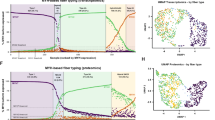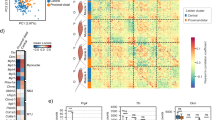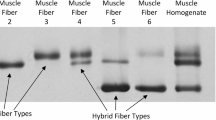Abstract
AMPHIBIAN skeletal muscle is generally regarded as being composed of two distinct fibre types, twitch fibres and slow fibres, and various morphological and functional criteria have been used to classify fibres into one of these two categories (for review see ref. 1). However, the results of several investigations on frog and toad, including Xenopus, muscles suggest that this is an oversimplification2–5. Smith and Ovalle6 demonstrated five classes of fibres in hind limb muscles of Xenopus laevis using various ultrastructural and histochemical criteria. The mechanical performances of fibres of two of these classes (fast, fatigue-resistant twitch fibres (type 2) and slow fibres (type 5), respectively) have recently been described in detail7. In the study reported here fibres with a characteristic microscopic appearance have been isolated from a hind limb muscle of Xenopus laevis and it is shown that they have functional properties which are intermediate between those of twitch and slow fibres. The fine structure of these fibres conforms to the description of Smith and Ovalle for the ‘type 4’ fibre, a fibre type which also can morphologically be said to represent an intermediary type.
This is a preview of subscription content, access via your institution
Access options
Subscribe to this journal
Receive 51 print issues and online access
$199.00 per year
only $3.90 per issue
Buy this article
- Purchase on SpringerLink
- Instant access to full article PDF
Prices may be subject to local taxes which are calculated during checkout
Similar content being viewed by others
References
Lännergren, J. in Basic Mechanisms of Ocular Motility and their Clinical Implications (eds Lennerstrand, G. & Bach-y-Rita, P.) 63–84 (Pergamon, Oxford, 1975).
Lännergren, J. & Smith, R. S. Acta physiol. scand. 68, 263–274 (1966).
Nasledov, G. A. Fedn Proc. Transl. Suppl. 25, T443 (1966).
Engel, W. K. & Irwin, R. L. Am. J. Physiol. 213, 511–518 (1967).
Smith, R. S., Blinston, G. & Ovalle, W. K. in Control of Posture and Locomotion (eds Stein, R. B., Pearson, K. B., Smith, R. S. & Redford, J. B.) 105–117 (Plenum, New York, 1973).
Smith, R. S. & Ovalle, W. K. J. Anat. 116, 1–24 (1973).
Lännergren, J. J. Physiol., Lond. 283, 501–521 (1978).
Pearse, A. G. Histochemistry, Theoretical and Applied, 1317–1318 (Churchill Livingstone London, 1972).
Hill, A. V. Proc. R. Soc. B126, 136–195 (1938).
Lännergren, J. Acta physiol. scand. 95, 347–349 (1975).
Lännergren, J. Acta physiol. scand. 69, 362–372 (1967).
Author information
Authors and Affiliations
Rights and permissions
About this article
Cite this article
LÄNNERGREN, J. An intermediate type of muscle fibre in Xenopus laevis. Nature 279, 254–256 (1979). https://doi.org/10.1038/279254a0
Received:
Accepted:
Issue date:
DOI: https://doi.org/10.1038/279254a0
This article is cited by
-
Fish muscle structure: fibre types in flatfish and mullet fin muscles using histochemistry and antimyosin antibody labelling
Journal of Muscle Research and Cell Motility (1993)
-
Relaxation from rigor by photolysis of caged-ATP in different types of muscle fibres fromXenopus laevis
Journal of Muscle Research and Cell Motility (1991)
-
Histochemical studies on the amphibian opercularis muscle (Amphibia)
Zoomorphology (1990)
-
Electrical properties of normal, denervated and organ-cultured slow fibres of toad cruralis muscles
Pfl�gers Archiv European Journal of Physiology (1989)
-
Histochemistry and isomyosins of tail musculature inXenopus
Journal of Muscle Research and Cell Motility (1989)



